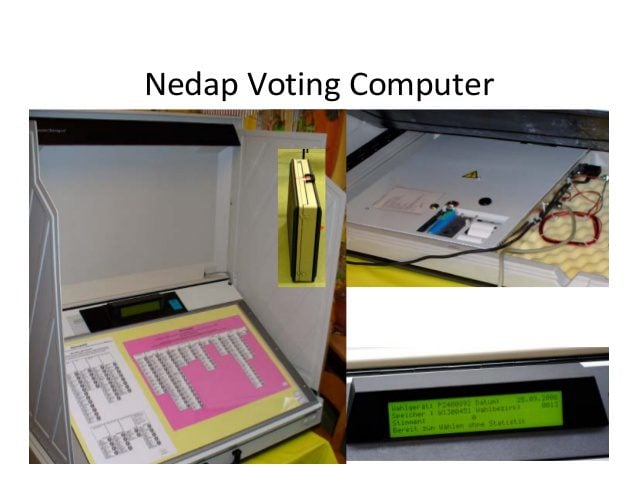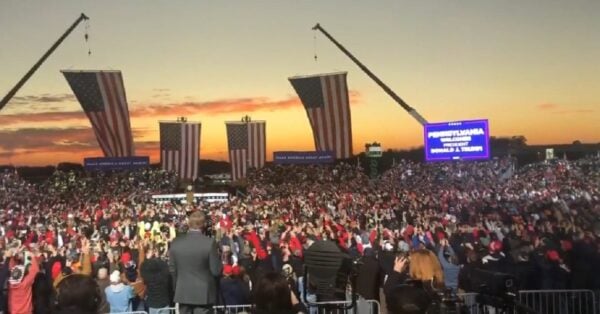
The United States is not the only Western nation that has had issues with electronic voting.
In 2020 several states witnessed abnormalities, vote switching and inaccurate vote totals in the thousands.A reader from the UK reminded us that Europe also had issues with voting machines and Ireland and The Netherlands banned voting machines a decade ago.
I am a reader from the UK and follow events in the USA with a great deal of interest. You may be interested to know that this was a common problem in Europe via Nedap voting machines whereby their security was compromised. Ireland purchased Nedap voting machines and subsequently destroyed them at a cost of £55 million due to security issues. I have attached a document to this email that explains this voting machine security issue that was faced by Europe and Ireland. I hope this information may be useful.
The Netherlands decided in 2007 to withdraw electronic NEDAP voting after after finding them unreliable and failed modern security requirements.
Case Study Report on Electronic Voting in the Netherlands
DECISION TO END ELECTRONIC VOTING
From the report:The government acted quickly in the wake of the release of the Commissions’ reports. During the press conference in which the Voting with Confidence report was released on September 27, 2007, the State Secretary for the Interior announced that the 1997 Regulation for Approval of Voting Machines would be withdrawn.
“We do not trust voting computers” had filed an administrative law procedure against the approval of NEDAP machines with the District Court of Amsterdam in March 2007. On October 1, 2007, the District Court decertified all NEDAP computers in use in the Netherlands as a result of the judicial procedure. With the approval of SDU voting machines already withdrawn, this decision left no voting machines certified for use in the Netherlands. On October 21, 2007, the 1997 Regulation for Approval of Voting Machines was officially withdrawn by Parliament, and the Decree of October 19, 1989 was amended, taking out the provisions that gave the minister responsibility for new regulations on approving voting machines. This legislative action removed the
possibility to certify any new voting machines.
Likewise in 2004 Ireland cancelled e-voting after finding the secrecy and accuracy of the voting could not be guaranteed.
Ireland has cancelled the use of electronic voting machines for the upcoming European elections in June after an independent commission said the secrecy and accuracy of the voting could not be guaranteed. The Irish government has spent 40 million euros on voting machines from the Dutch manufacturer Nedap. The Irish opposition demands the resignation of the responsible minister for the Environment and Local Government, Martin Cullen.
There has been a fierce public debate in Ireland about the introduction
of e-voting after technical experts raised concerns on the reliability
of the voting machines and its software. In 2002 the Irish security firm
Zerflow reviewed the Nedap machines and concluded that manipulation of
the voting process was possible. Experts and civil society groups have
since then pushed for an independent review of the source code and the
implementation of a paper trail (Voter Verified Audit Trail). The paper
trail should make it possible for voters to see the result of their
voting on paper as they can’t see what happens inside voting machines.
The machine might display one vote to the voter and record something
else internally. The paper ballot can also be used for a manual re-count
if desired. The Nedap machines do not provide such a paper trail…
…The Irish debate has prompted Dutch members of parliament to ask questions about the reliability of the Nedap machines used in the Netherlands.
President Trump even warned months before the election that the only way Republicans could lose was in a rigged election.

Via Jack Posobiec.

The Supreme Court is still scheduled to decide on the illegal moves by Pennsylvania officials before the 2020 election.
The alliance of Trump-haters was even behind the illegal
moves by far-left swing state officials to change voter laws without
consent of the state legislatures.
TIME Magazine cheers this.
It was the definition of “rigged.”
So were they behind the illegal late-night ballot dumps too?
Molly Ball at TIME Magazine reported:
There was a conspiracy unfolding behind the scenes, one that both curtailed the protests and coordinated the resistance from CEOs. Both surprises were the result of an informal alliance between left-wing activists and business titans. The pact was formalized in a terse, little-noticed joint statement of the U.S. Chamber of Commerce and AFL-CIO published on Election Day. Both sides would come to see it as a sort of implicit bargain–inspired by the summer’s massive, sometimes destructive racial-justice protests–in which the forces of labor came together with the forces of capital to keep the peace and oppose Trump’s assault on democracy.
The handshake between business and labor was just one component of a vast, cross-partisan campaign to protect the election–an extraordinary shadow effort dedicated not to winning the vote but to ensuring it would be free and fair, credible and uncorrupted. For more than a year, a loosely organized coalition of operatives scrambled to shore up America’s institutions as they came under simultaneous attack from a remorseless pandemic and an autocratically inclined President. Though much of this activity took place on the left, it was separate from the Biden campaign and crossed ideological lines, with crucial contributions by nonpartisan and conservative actors. The scenario the shadow campaigners were desperate to stop was not a Trump victory. It was an election so calamitous that no result could be discerned at all, a failure of the central act of democratic self-governance that has been a hallmark of America since its founding.
Their work touched every aspect of the election. They got states to change voting systems and laws and helped secure hundreds of millions in public and private funding. They fended off voter-suppression lawsuits, recruited armies of poll workers and got millions of people to vote by mail for the first time. They successfully pressured social media companies to take a harder line against disinformation and used data-driven strategies to fight viral smears. They executed national public-awareness campaigns that helped Americans understand how the vote count would unfold over days or weeks, preventing Trump’s conspiracy theories and false claims of victory from getting more traction. After Election Day, they monitored every pressure point to ensure that Trump could not overturn the result. “The untold story of the election is the thousands of people of both parties who accomplished the triumph of American democracy at its very foundation,” says Norm Eisen, a prominent lawyer and former Obama Administration official who recruited Republicans and Democrats to the board of the Voter Protection Program.



